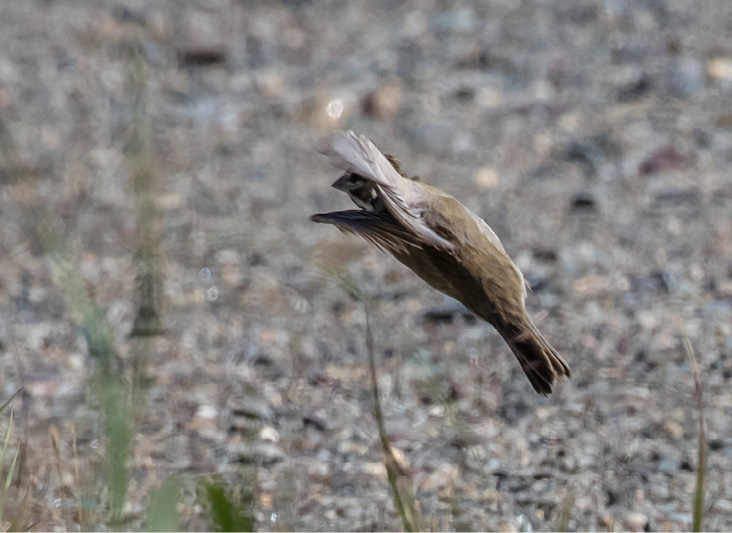Wayne R. Petersen

David M. Larson
In the last issue, readers were treated to a view of half a mystery bird as an identification challenge. This time the view provided is more of a longitudinal section, offering a more tubular perspective. But unlike the last two issues where the featured mystery species were clearly waterbirds, this time the puzzler is a passerine….and you're welcome for the hint!
Although upon first inspection the mystery image may appear daunting, a closer look clearly offers a useful clue—the bill. The bill of the featured species is obviously conical, thick at the base and pointed at the tip, hallmarks of a seed-eating species. If the mystery bird is only viewed in black and white, its identity is arguably more challenging than when viewed in color on the Bird Observer website. When seen in color, however, the overall back and rump of the bird are medium brown and the tail is tipped slightly in white—a feature notable on what appear to be at least the bird's left and right outer tail feathers. The combination of conical bill shape, medium brown coloration, and the suggestion of white on the tail all point to a sparrow or finch of some sort.
When the white-tipped tail feathers are viewed in the context of a black malar (jaw) stripe and a dark triangle under a short pale (white?) stripe below the eye on the mystery bird, the identification is unambiguous. The mystery bird is a Lark Sparrow (Chondestes grammacus). The identity of this long-tailed, plain-breasted sparrow would be more obvious if the photo showed the bird's distinctive face pattern or unstreaked underparts with a dark central spot. The white tips to the tail feathers are unique and lacking in any other sparrow species likely to occur in Massachusetts. Although the Vesper Sparrow and the Dark-eyed Junco also have white in the tail, their outer tail feathers are completely white. A Lapland Longspur and an Eastern Towhee would also show white in the outer tail, however a Lapland Longspur would have a streaked back, and an Eastern Towhee would have a completely dark, unpatterned head.
The Lark Sparrow is an occasional and primarily coastal fall migrant, a scarce spring migrant, and a rare winter visitor in Massachusetts. David Larson photographed this Lark Sparrow at Parker River Refuge on Plum Island on September 9, 2017.
Wayne R. Petersen